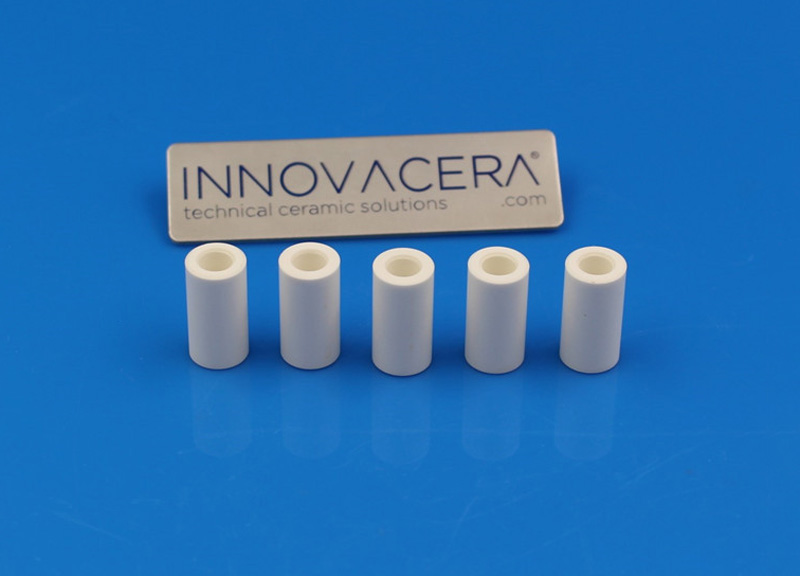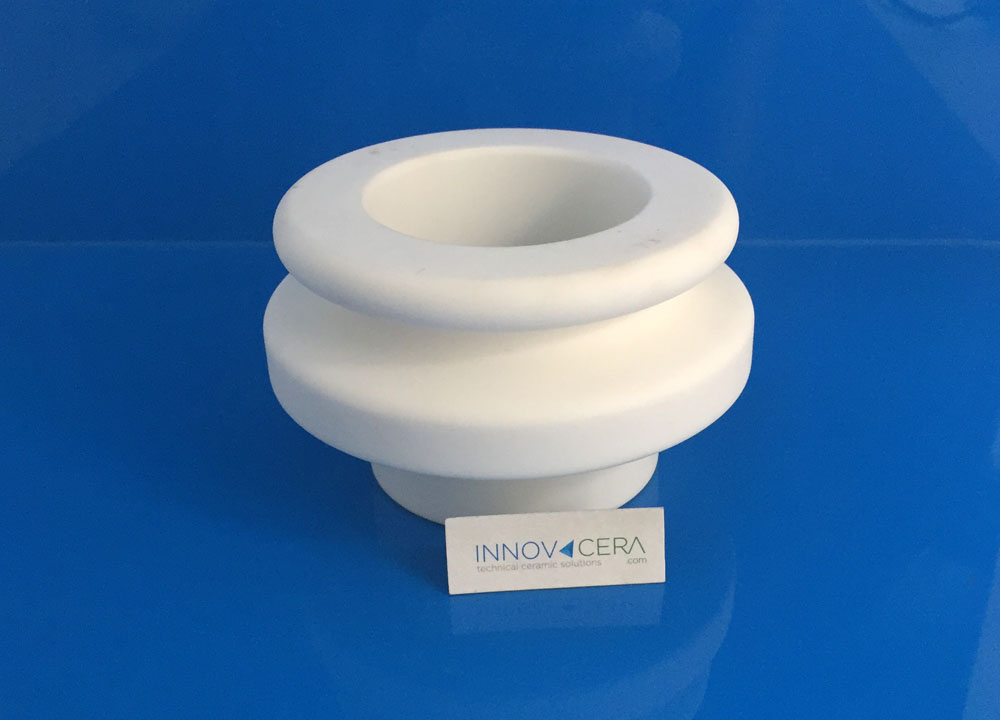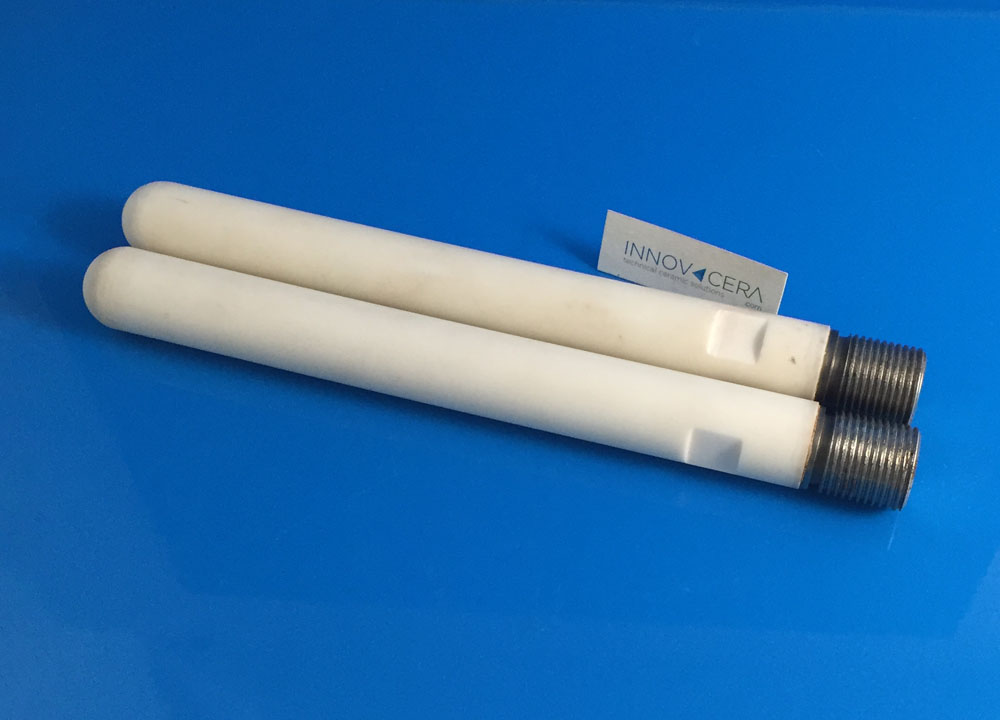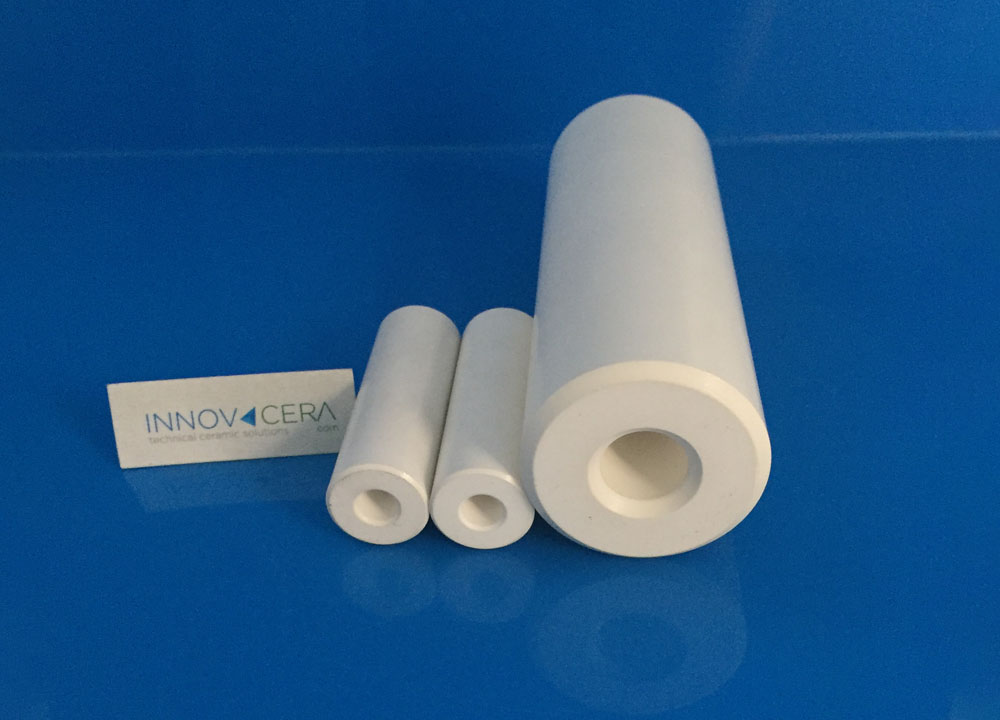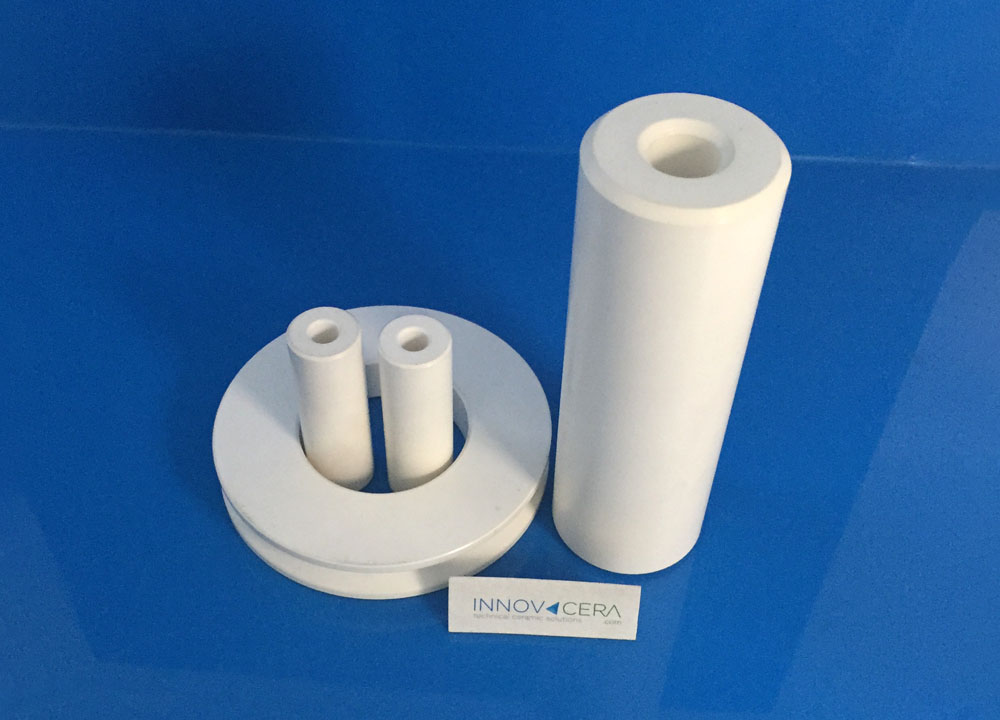Zirconia is an important oxide with a special position in the material field. It has unique physical and chemical properties, such as high hardness, low thermal conductivity, high melting point, high temperature and corrosion resistance, chemical inertness, and amphoteric properties. The application of ceramics, functional ceramics, and structural ceramics has developed rapidly.
The fatal disadvantages of ceramic materials are brittleness, low reliability, and low repeatability. These shortcomings seriously affect the application range of ceramic materials. Therefore, it is necessary to improve the fracture toughness of zirconia ceramics, achieve material strengthening and toughness, and improve its reliability and service life.
Toughening method of zirconia ceramics
The basis for the toughening of zirconia ceramic materials is the t→m phase transition, and the main mechanisms are: phase change toughening, microcrack toughening and residual stress toughening.
Phase change toughening
The metastable tetragonal phase t-ZrO2 undergoes a phase change under the action of the stress field at the crack tip, forming a monoclinic phase, resulting in volume expansion, thereby forming compressive stress on the crack, hindering crack propagation, and playing a toughening role. This is the well-known Garvie stress-induced phase transformation toughening mechanism. In addition, phase change toughening can also be applied to functional ceramics. Such as the ferroelectric/piezoelectric domain transition toughening mechanism. In piezoelectric ceramic materials, the external stress that causes cracks is converted into electric energy to achieve the purpose of toughening.
Microcrack toughening
The t→m phase transition is accompanied by volume expansion, causing many microcracks to form in the phase transition area. When the main crack encounters micro-cracks during the propagation process, the propagation path of the main crack will change direction or branch. In addition, the tip of the main crack induces phase transformation due to stress concentration and generates microcracks, which can disperse the energy of the tip of the main crack, thereby improving the fracture toughness of the material. When the microcracks are independent of each other, the higher the density of microcracks, the better the toughening effect.
Residual stress toughening
Ceramic materials can achieve the purpose of strengthening and toughening by introducing residual compressive stress. Control the ceramics containing dispersed tetragonal ZrO2 particles to undergo a tetragonal to monoclinic phase change on the surface, causing surface volume expansion and obtaining surface residual compressive stress. Since ceramic fractures often start from surface cracks, the surface residual compressive stress is beneficial to prevent the propagation of surface cracks, thereby enhancing the toughness. When the smaller-sized t-phase particles undergo phase transition, the total expansion strain is small, and the strain energy is also small, which is not enough to cause microcracks in the matrix, so these strain energies are stored in the form of residual stress. When the main crack propagates into the residual stress zone, the residual stress is released and hinders the further expansion of the main crack. This toughening mechanism is called the residual stress toughening mechanism.
Types and characteristics of zirconia toughened ceramics
According to the phase transformation toughening effect of metastable tetragonal zirconia under stress induction, the phase transformation toughening of zirconia mainly includes tetragonal polycrystalline zirconia toughened ceramic (TZP), partially stabilized zirconia toughened ceramic (PSZ), oxide Zirconium Toughened Ceramic (ZTC).
Toughened tetragonal polycrystalline zirconia ceramic
When an appropriate amount of stabilizer is added to zirconia, t-ZrO2 can be stored in a meta-stable state to room temperature. Its microstructure is characterized by tetragonal zirconia fine crystals accounting for the majority of the composition. This ceramic material is called tetragonal polycrystalline zirconia ceramics. This kind of ceramic is usually sintered in the tetragonal single-phase region, and no phase change occurs during cooling. Most or even all tetragonal phases are retained at room temperature. The content of tetragonal zirconia in the sintered body often depends on the crystal grain size and The density of the sintered body is controlled by the sintering temperature and holding time. Commonly used YZP materials include Y-TZP, Ce-TZP, etc.
Partially stabilized zirconia toughened ceramics
When the addition amount of zirconia stabilizer is in a certain range, the highly stable c-ZrO2 will be aging at an appropriate temperature to make the c-ZrO2 large crystal grains precipitate out many fine spindle-shaped tetragonal phase crystal grains, forming a cubic phase and The tetragonal biphasic structure. Among them, the cubic phase is stable, and the tetragonal phase is metastable, and it is stored until room temperature. Under the induction of external force, the t→m phase is induced and accompanied by volume expansion, which dissipates part of the energy and offsets part of the external force, thereby playing a toughening effect. This type of ceramic is called partially stabilized zirconia ceramic.
This ceramic is usually sintered in the cubic phase solid solution zone to form a uniform cubic phase matrix. After sintering, the fine tetragonal phase is uniformly precipitated among the cubic phase grains after proper cooling. When the precipitated tetragonal phase is in the critical size, the effect of phase transformation toughening is the best. In the preparation process, the temperature and time of the heat treatment can be controlled to obtain tetragonal zirconia grains with specific morphology and size. Commonly used PSZ ceramics mainly include MgO partially stabilized zirconia toughened ceramic Mg-PSZ and CaO partially stabilized zirconia toughened ceramic Ca-PSZ.
Zirconia toughened ceramics
If a certain amount of tetragonal zirconia is added to other types of ceramic matrix, and it is uniformly dispersed in the ceramic matrix, the toughness of the ceramic can be significantly improved by using the zirconia phase transformation toughening mechanism. This ceramic is called zirconia toughened ceramic. Common ZTC materials include zirconia toughened alumina and zirconia toughened mullite, ZTA, and ZTM respectively.
Zirconia Toughened Alumina (ZTA) Properties
| Property | Unit | Value |
|---|---|---|
| ZrO2 Content | wt% | ZrO2≥ 15% |
| Density | g/cm³ | ≥ 4.00 |
| Hardness (HRA) | HRA ≥ | 90 |
| Flexural Strength | MPa ≥ | 350 |
| Max Using Temp | ℃ | 1500 |
| Porosity Testing | Pass | |
| Thermal Shock Testing | Pass | |
| Coefficient of Linear Expansion | ×10-6/℃ | 8.4 |
| Dielectric Constant | εr20℃, 1MHz | 10 |
| Dielectric Loss | tanδ×10-4, 1MHz | 5 |
| Volume Resistivity | Ω·cm 20℃ | 1014 |
| Breakdown Strength | KV/mm, DC ≥ | 20 |
| Acid Resistance | mg/cm² ≤ | 2 |
| Alkali Resistance | mg/cm² ≤ | 0.1 |
| Wear Resistance | g/cm² ≤ | 0.1 |
| Compressive Strength | MPa ≥ | 2500 |
| Breaking Strength | MPa ≥ | 300 |
| Modulus of Elasticity | GPa | 360 |
| Poisson’s Ratio | 0.23 | |
| Thermal Conductivity | W/m·K (20℃) | 25 |

